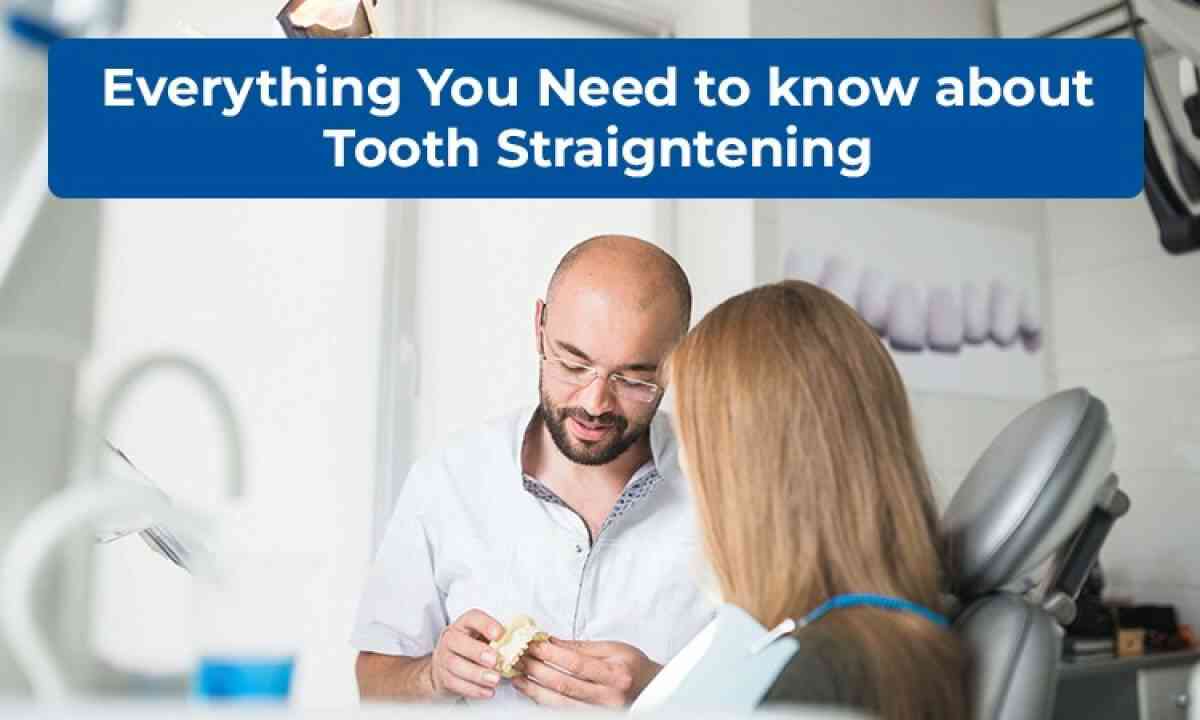The Tooth Straightening Process: A Comprehensive Guide
- - Category: Dental Care
- - 04 Jan, 2023
- - Views: 267
- Save

The main purpose of tooth straightening. is to improve your oral and dental health by rectifying crooked teeth.
What is tooth straightening?
The procedure of aligning & moving misaligned or crooked teeth into the correct position based on a person’s bite by using external force and pressure over time is called tooth straightening.
The main purpose of tooth straightening. is to improve your oral and dental health by rectifying crooked teeth, underbites, overbites, deep bites, open bites, cross bites, teeth gaps, and other flaws of the teeth and jaw.
Before we discuss various teeth straightening options, let us talk about various kinds of misalignment of the teeth.
Also Read: It’s Easy (and Smart) to Fix a Chipped Tooth
Types of Teeth Misalignment & Their Causes
Malocclusion (or misaligned teeth) is a common condition that can affect your general oral health, at the same time hampering your self-esteem. Some level of malocclusion is present in almost all people for which they may seek orthodontic treatment.
These three classes of malocclusion include:
- Class I — it is the most common type where there is minor crowding of the front teeth but the molars align.
- Class II — in this type of malocclusion, the upper teeth and jaw overlap the lower teeth and jaw
- Class III — This involves pushing forward the lower jaw in front of the upper jaw
These three classes also have seven distinct types of misalignment, which include:
- Overbite
- Underbite
- Crossbite
- Open Bite
- Overjet
- Crowded Teeth
- Diastema
Malocclusion is usually inherited but other causes may include defects at the time of birth, childhood habits, some teeth abnormalities, failed dental procedures, falls, and injuries.
The good news is that almost all cases of malocclusion can be rectified with orthodontic treatment. The course of treatment depends on the type and severity of the condition and the patient’s age.
Our expert orthodontist at Morgan Hill Dentistry, an emergency dental clinic can determine the best treatment plan for your needs.
What are the benefits of tooth straightening?
- Tooth straightening. are easier to brush and floss and reduce the risk of tooth decay and gum diseases.
- Tooth straightening helps to improve gum health by creating a strong shield against periodontal disease.
- Aligned teeth help you chew your food well, improving overall digestion.
- They also help to make speech clearer
- They improve facial aesthetics as they lift the mouth upwards and make the skin look firmer and younger in the process enhancing your smile and boosting your confidence.
- Straight and aligned teeth decrease neck and head pain as some bite issues can result in chronic headaches
- Aligned teeth reduce the risk of developing jaw issues and temporomandibular joint disorder (TMD)
What are the options and treatments for Tooth straightening?
You will need to see an orthodontist if you wish to get orthodontic treatment to get your teeth straightened and aligned.
The few main types of orthodontic treatments include:
Dental Braces
Used to align crooked teeth and fill the gap in between them, dental braces at Morgan Hill Dentistry are devices that are strategically placed to apply the amount of pressure on the teeth that is just enough to put them into the correct position.
A classic orthodontic treatment, braces usually take 1-2 hours minutes to put on and need follow-up visits for adjustment every 6-10 weeks. They need to be worn for roughly 18 months to 2 years.
Braces are broadly divided into three major types
- Metal braces: These traditional braces are considered the most visible and effective orthodontic treatment. Made of metal brackets and an archwire, held together by rubber bands, which apply pressure to the crooked teeth and gradually shift them into place, Metal Braces are a cheaper option that is effective but have a poor cosmetic value.
- Ceramic braces: They are either tooth-colored or clear brackets attached to a very thin metal wire and are not much visible but may be a bit costlier. They are not removable and can get their purpose achieved more quickly than clear aligners. A great option for adults who require a quicker result and do not care as much about appearance. However, these clear brackets can stain while consuming certain colored foods and drinks like coffee, wine, blackberries, etc.
- Lingual braces: These wired braces are placed behind the teeth and are nearly invisible, but are expensive and also have the chance of causing tongue pain and temporary lisp as they are in constant touch with the tongue. More prone to catching food particles, these can be a little tricky to clean. But these are a great option for those looking for a practical choice that offers the effectiveness of traditional braces combined with the luxury of invisible teeth straightening.
Orthopedic expansion
This Treatment helps to make space for the crowded teeth, without the need for tooth extraction, and by expanding the jaw and providing pleasing cosmetic changes to the shape of the face, giving you a wider smile. It helps to improve the results while shortening the treatment time for other orthodontic devices like braces or clear alignment trays.
Moreover, orthopedic expansion can add fullness to the cheeks and lips, providing you with effects that are similar to plastic surgery. Read more

